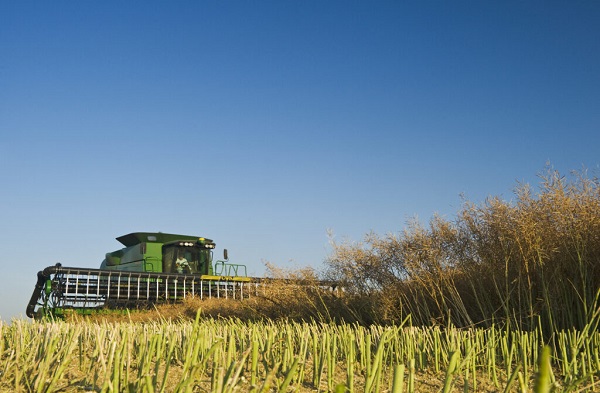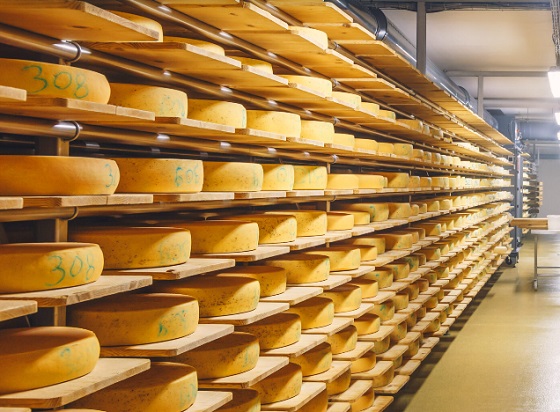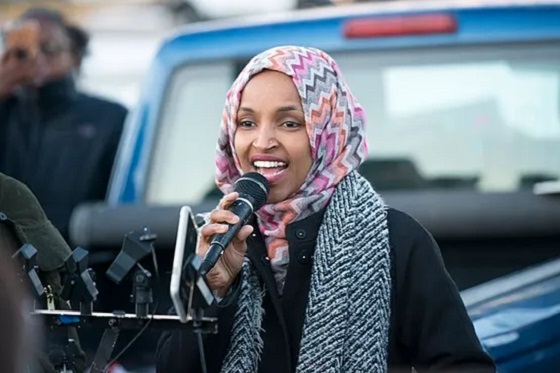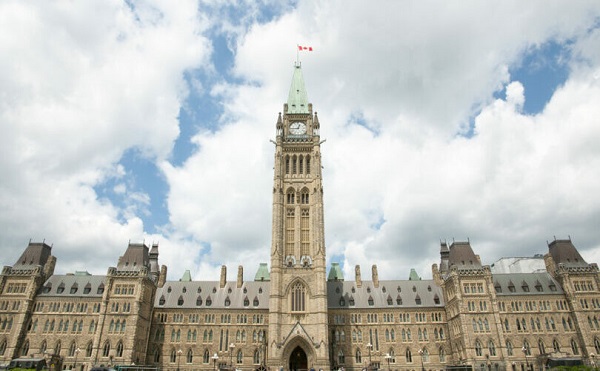October 1 the federal Liberals’ new “surtax” of 100 percent on the import of Chinese electric vehicles (EVs) kicked in. Announced in late August and echoing a U.S. move three months earlier, the surtax comes on top of an existing 6.1 percent import tariff and doubles the landed price of those considerably less expensive EVs made across the Pacific Ocean. (New tariffs are also being imposed on imported Chinese aluminum and steel products.) China wasted no time in striking back where it would hurt most, launching an anti-dumping “investigation” into exported Canadian canola. Since there’s no evidence Canada’s agriculture sector is engaging in this anti-free-trade practice – which technically involves selling a product in a foreign market at a lower price than domestic buyers pay in the producing country – there’s a very high likelihood China’s investigation is a procedural pretext to halting imports of Canadian canola.
China’s move on the versatile oilseed was predictable given what happened following Canada’s arrest of Huawei’s Chief Financial Officer, Meng Wanzhou, in 2019. Along with arresting two innocent Canadian expatriates and triggering the infamous “two Michaels” imbroglio, the Communist regime also blocked imports of canola from two major Canadian export handlers. Canola producers in Alberta, Saskatchewan and Manitoba lost an estimated $1.5-$2.4 billion in revenue as a result of that year-long boycott.
 Striking back where it hurts most: Following the Justin Trudeau government’s (top left) new “surtax” of 100 percent on the import of Chinese electric vehicles (EVs), China wasted no time in launching an anti-dumping “investigation” into exported Canadian canola, Canada’s second-most important farm crop. Shown at bottom right, Chinese President Xi Jinping. (Sources of photos (clockwise starting top-left): ©Kyodonews via ZUMA Press; Ethan Llamas, licensed under CC BY-SA 4.0; Paul Kagame, licensed under CC BY-NC-ND 2.0; Paul Howard Photo, licensed under CC BY-NC-SA 2.0)
Striking back where it hurts most: Following the Justin Trudeau government’s (top left) new “surtax” of 100 percent on the import of Chinese electric vehicles (EVs), China wasted no time in launching an anti-dumping “investigation” into exported Canadian canola, Canada’s second-most important farm crop. Shown at bottom right, Chinese President Xi Jinping. (Sources of photos (clockwise starting top-left): ©Kyodonews via ZUMA Press; Ethan Llamas, licensed under CC BY-SA 4.0; Paul Kagame, licensed under CC BY-NC-ND 2.0; Paul Howard Photo, licensed under CC BY-NC-SA 2.0)
Canola seeds are Canada’s second-most widely grown agricultural commodity, generating a critical 25 percent of the nation’s farm crop receipts, totalling $13.6 billion last year (agricultural prices fluctuate significantly). China has long been Canada’s biggest foreign canola buyer – importing 4.5 million tonnes worth nearly $4 billion last year – and was expected to purchase 70 percent of this year’s bumper crop.
The Justin Trudeau government’s initial press release described Chinese EVs as an “extraordinary threat” to Canada’s auto workers. (There aren’t any Chinese EV brands for sale in Canada yet.) But the reality is that Canada produces almost no EVs and there are few projects on the table to do so. The genuine long-term threat to Canada’s auto workers is the Trudeau government’s “mandate” that the auto industry phase out the manufacture of internal combustion engine-powered cars and light trucks by 2035.
Much of the global auto industry has been sliding into a state approaching panic over such national mandates, which are now regarded even by some of the industry’s most established and storied brands as an existential threat. Some countries are showing signs of abandoning the 2035 changeover or at least extending the timeline. Italian Prime Minister Georgia Meloni, for example, recently termed the European Union’s phase-out policy “self-destructive”, while her energy minister has urged the EU to lift the impending ban on gasoline/diesel-powered engines.
 “Self-destructive”: While the Trudeau government continues to push for the phaseout of gasoline and diesel-powered vehicles by 2035 in order to force Canadians entirely into EVs, some European leaders are beginning to question similar mandates, including Italian Prime Minister Georgia Meloni (bottom left). (Sources of photos: (top right) DealerOn; (bottom left) AP Photo/Czarek Sokolowski; (bottom right) FaceMePLS, licensed under CC BY 2.0)
“Self-destructive”: While the Trudeau government continues to push for the phaseout of gasoline and diesel-powered vehicles by 2035 in order to force Canadians entirely into EVs, some European leaders are beginning to question similar mandates, including Italian Prime Minister Georgia Meloni (bottom left). (Sources of photos: (top right) DealerOn; (bottom left) AP Photo/Czarek Sokolowski; (bottom right) FaceMePLS, licensed under CC BY 2.0)
But not Canada, at least not under the current government. What is on the table are subsidies – some $52.5 billion as of April, according to the Parliamentary Budget Officer – to Honda, Swedish battery maker Northvolt, Ford, Stellantis, Volkswagen and General Motors to build EV battery plants in Ontario and Quebec. The total government support exceeds what the private-sector manufacturers are themselves investing. The labour forces at these facilities will thereby represent some of the costliest jobs ever “created” in Canada, and it is entirely guesswork whether any of these plants will ever recover their prodigious expense.
There are valid reasons for great concern about the importation of Chinese-made EVs. One is the recently voiced allegation that the regime is having EV manufacturers embed technology in the cars’ computers so that China’s military could one day remotely turn them off en masse, causing chaos in the targeted countries. But Canada’s options as a trade warrior are severely limited. A crude response like the one Trudeau has attempted – levying a “surtax” steeper than anything that was ever imposed by former U.S. President Donald Trump, the man Trudeau probably despises more than anyone else in the world – is definitely not one of them. Canada’s canola exports – our country’s number-one item sold to China – offered China an easy target for a punishing tit-for-tat response.
The carbon tax has become yet another inter-regional financial transfer that skims wealth generated in the West to be spent on subsidy-dependent industries in Laurentian Canada.
That’s because the American situation is substantially different from Canada’s. While the U.S. does manufacture EVs, the U.S.-China trading relationship is more complex and involves multiple large industries. This means there is no obvious single target for China to strike. And this makes Trudeau’s mimicking of the American tariff profoundly irresponsible. China holds the top cards at this trade table. Late last month, for example, China initiated further steps towards retaliation when its Commerce Ministry announced a three-month-long “anti-discrimination” investigation into Canada’s new tariffs.
 Not-so-mighty trade warrior: With canola being Canada’s primary export to China, Trudeau’s crude “surtax” on Chinese EVs, steel and aluminum opened the country to a foreseeable – and foreseeably punishing – tit-for-tat response. (Source of graph: Janice Nelson)
Not-so-mighty trade warrior: With canola being Canada’s primary export to China, Trudeau’s crude “surtax” on Chinese EVs, steel and aluminum opened the country to a foreseeable – and foreseeably punishing – tit-for-tat response. (Source of graph: Janice Nelson)
That the Liberal government would put productive, self-supporting western Canadian canola farmers at risk in order to protect heavily subsidized jobs in Ontario and Quebec is despicable but hardly out of character. The Trudeau Liberals have a long record of making decisions or imposing policies that harm the West – and western farmers in particular.
Data from the Agricultural Carbon Alliance show that during just one month in 2023, livestock farmers paid an average of $726 per month each in carbon taxes, field crop farmers $2,024 and greenhouse operators $17,173. A sampling of 50 farms showed total carbon tax payments of $329,644 in just that one month. With the tax rate rising inexorably every year, within a few years those same 50 farms will be paying nearly $900,000 per month – $11 million in 2030 alone. There are 190,000 farms in Canada. The carbon tax has become yet another inter-regional financial transfer that skims wealth generated in the West to be spent on subsidy-dependent industries in Laurentian Canada.
 A sampling of just 50 of Canada’s 190,000 farms showed total carbon tax payments of $329,644 in one month, an amount projected to triple by 2030 – while battery manufacturers based in eastern Canada are to receive $52.5 billion in subsidies. Shown at bottom, Ontario Premier Doug Ford and Prime Minister Justin Trudeau observe an assembly line at an event announcing plans for a Honda electric vehicle battery plant in Alliston, Ontario, April 2024. (Sources: (graph) Agriculture Carbon Alliance; (photo) The Canadian Press/Nathan Denette)
A sampling of just 50 of Canada’s 190,000 farms showed total carbon tax payments of $329,644 in one month, an amount projected to triple by 2030 – while battery manufacturers based in eastern Canada are to receive $52.5 billion in subsidies. Shown at bottom, Ontario Premier Doug Ford and Prime Minister Justin Trudeau observe an assembly line at an event announcing plans for a Honda electric vehicle battery plant in Alliston, Ontario, April 2024. (Sources: (graph) Agriculture Carbon Alliance; (photo) The Canadian Press/Nathan Denette)
The harmful new 100 percent EV tariff comes at a time when the entire Canadian farming sector’s future is in doubt. A study sponsored by the Royal Bank of Canada predicts that by 2033, 40 per cent of Canadian farm operators will retire. A shortfall of 24,000 general farm, nursery and greenhouse workers is expected over that period. “These gaps loom at a time when Canada’s agricultural workforce needs to evolve to include skills like data analytics,” the study states. “To meet our medium and long-term goals, we’ll need to build a new pipeline of domestic operators and workers.” Every new policy move that adds to the agriculture sector’s woes makes such a metaphorical pipeline as unlikely as the physical pipelines that the Trudeau government’s other policies have killed, from Energy East to Northern Gateway. Ruinous policies such as the carbon tax need to go, and new policies that place agriculture at risk must be avoided.
The most perverse aspect of this lengthening saga is that the future of those battery plants that the Liberals intend to subsidize with $52.5 billion and counting, raised through carbon taxes and additional debt we cannot afford to incur, is itself in serious jeopardy. That is because the grandiose global plan to transition the world to EVs is looking increasingly like a house of cards, as we have long warned (please see here, here or here). As this has seeped into public consciousness, the once-exponential growth in EV sales has flattened.
As Forbes magazine recently reported, “Fully-electric passenger car demand is softening, fast. Unsold inventories have been clogging dealers’ lots. Manufacturers – from the biggest brands down to the smallest startups – are cutting back on production and investment plans.” Some prospective EV builders – like Apple – are dropping out entirely. Even before the U.S. and Canadian tariffs on Chinese EVs, reports and images came out of China showing fields packed with unsold (and possibly abandoned) EVs, a problem that lately is being “exported” as tens of thousands of Chinese EVs clog ports and shipping hubs in destination markets.
We have every reason to be outraged at a government that spends tens of billions of dollars subsidizing an entirely artificial industry in which our country has no innate economic advantage, while imposing heavy taxes on an industry that is absolutely vital to thousands of rural communities and to the food security of us all.
How does the future of Canadian EV manufacturing relate to the future of farming? The answer is that the first cannot exist at all without gigantic taxpayer-funded subsidies, while Canada’s farming sector – despite being an innately risky undertaking at the mercy of fickle Mother Nature and unpredictable market swings – is generally self-supporting and on balance profitable, at times highly so. What it needs above all is to be relieved of debilitating policies – first and foremost the carbon tax. We should not be robbing Canadian farmers to pay subsidies to battery-makers.
 Global house of cards: With consumers awakening to the profound shortcomings of EVs, tens of thousands of unsold battery-powered cars have been clogging Chinese ports and shipping hubs (top right) – a problem now being “exported” to destination markets including Canada’s auto dealerships (bottom right). (Source of bottom right photo: Golden Shrimp/Shutterstock)
Global house of cards: With consumers awakening to the profound shortcomings of EVs, tens of thousands of unsold battery-powered cars have been clogging Chinese ports and shipping hubs (top right) – a problem now being “exported” to destination markets including Canada’s auto dealerships (bottom right). (Source of bottom right photo: Golden Shrimp/Shutterstock)
Instead, we need to encourage young people to enter the farming industry and provide them with the skills needed to “build that new pipeline” of agricultural workers. A country that can’t fuel and feed itself is a vulnerable country even in good times, and a starving, freezing one in bad. We Canadians are fortunate to have the natural resources needed to both fuel and feed ourselves plus create wealth by exporting the products that we derive from those resources. Canada’s oil, natural gas, coal, forests, fisheries and soils represent natural advantages that Canadians long ago became adept at leveraging into livelihoods and prosperity.
We have every reason to be outraged at a government that spends tens of billions of dollars subsidizing an entirely artificial industry in which our country has no innate economic advantage, while imposing heavy taxes on an industry that is absolutely vital to thousands of rural communities and to the food security of us all.
Gwyn Morgan is a retired business leader who has been a director of five global corporations.
Source of main image: bill barber, licensed under CC BY-NC 2.0.












